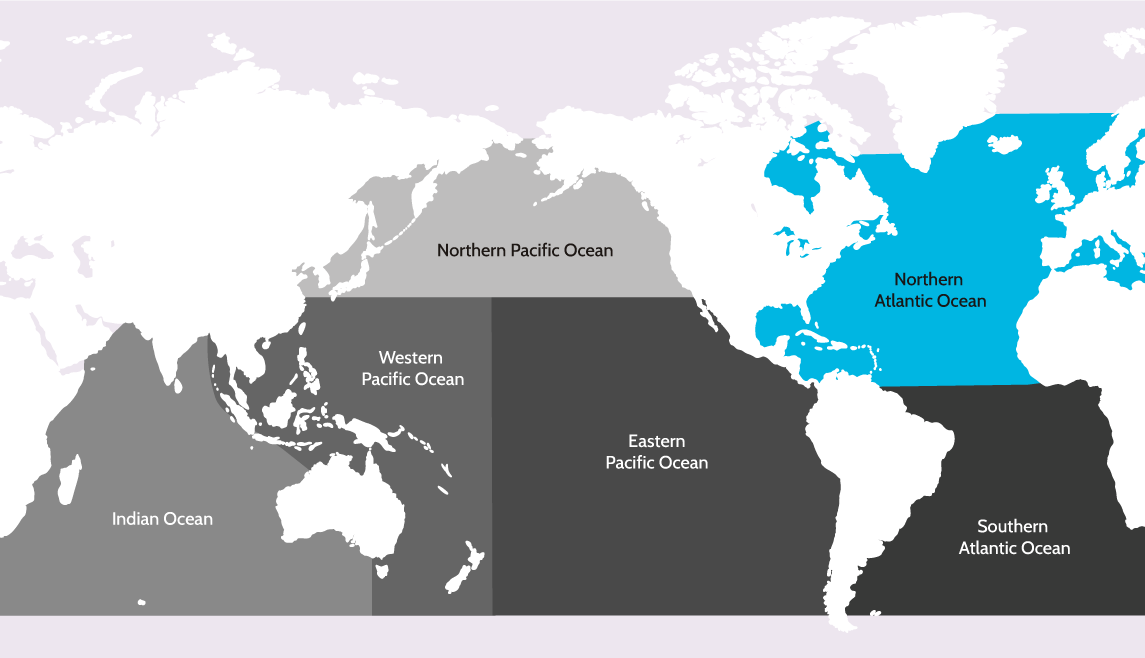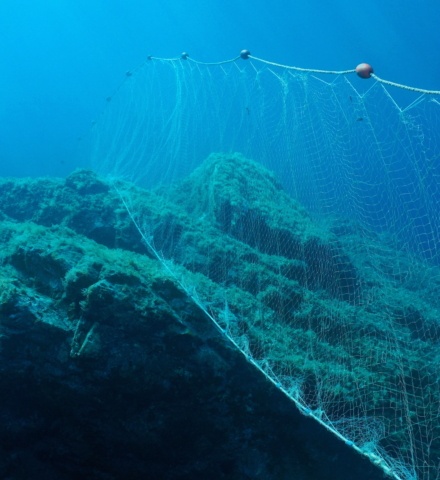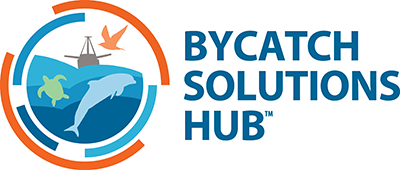Gillnets
Northern Atlantic Ocean
Gillnets are designed to trap fish that swim into them, which become increasingly entangled as they fight to get out. They are either tethered into the substrate (set gillnets) or attached to buoys and float at a specific depth (drift gillnets).


Target Species
Groundfish
Salmon
Bycatch Species
Marine Mammals
Sea Turtles
Sharks and Rays
Solutions
View allFunding Opportunities
View allDescription
Research suggests that over 300,000 whales and dolphins die annually due to entanglement in fishing gear, with additional unknown numbers also entangled in marine debris. This can have devastating, long-term conservation impacts on those populations that are already threatened, in some cases critically. In response to these growing concerns, the International Whaling Commission (IWC) launched a Global Whale Entanglement Response Network (GWERN) in 2011. The immediate aim of the program was to build safe and effective entanglement response capability around the world. The long-term goal is to prevent entanglements incidence globally.
The program is a partnership with the Center for Coastal Studies (CCS) in Provincetown, Massachusetts, US considered one of the global leaders in entanglement response. It is led by Technical Advisors who work for both CCS and the IWC, supported by an Expert Panel drawn from countries with long-standing and well-tested approaches to entanglement response.
With assistance from this global expert group, a Best Practice Guidelines and a two-day entanglement response training package has been development and is in need of further support. The training workshop includes classroom study, with information on data collection, relevant regulations, and regional cetacean identification, followed by on the water, hands-on disentanglement exercises. Since 2012, these training workshops have been delivered across five continents, reaching over 1,700 participants from more than 43 countries.
Funding to support this program includes equipment costs for disentanglement kits and trainer sponsorship consisting of flights, subsistence and a $205/day trainer fee. Additionally, a smaller funding package to support disengagement kit supplies alone is available.
Beneficiary: International Whaling Commission in partnership with Center for Coastal Studies
- Funding to support equipment costs for disentanglement kits and trainer sponsorship $18,944 USD
Description
Set nets, particularly gillnets, are estimated to be responsible for 98% of the 600,000 marine mammals incidentally caught in fisheries each year. In Norway, the species most impacted is the harbour porpoise (Phocoena Phocoena). It is estimated that 2,871 harbour porpoises are caught each year in Norwegian gillnet fisheries, with 1,127 (39%) of these attributed to gillnet fisheries targeting Atlantic cod.
This project is designed to address dolphin and porpoise bycatch in the Norwegian Atlantic cod (Gadus morhua) gillnet fishery through the increased implementation of acoustic pingers. The Norwegian Institute of Marine Research (IMR) has conducted multiple trials that resulted in between 70-100% reduction in bycatch rates of harbour porpoise in Norwegian gillnet fisheries which led to their mandated use. However, compliance rates are low, mainly due to the financial costs of purchasing and installing the pingers.
This funding opportunity will provide 500 Fishtek banana acoustic pingers to Atlantic cod gillnet vessels for the 2024 and 2025 fishing seasons. Through a collaboration with IMR, the 500 pingers will be installed on approximately 50 vessels who have agreed to continued monitoring of the equipment and post season surveys to provide feedback that can be used to increase operational success of the pingers while continuing to reduce dolphin and porpoise bycatch in the region.
Beneficiary:
- Outfit 50 Vessels with Acoustic Pingers FUNDED
Description
The Swordfish Deep Buoy Set Gear (DBSG) experimental fishery is a low-bycatch alternative to traditional commercial gear targeting swordfish, pelagic longlines and drifting gillnets. DSBG reduces bycatch by setting beneath the thermocline, where non-targeted species are uncommon, and promoting the removal of high-risk traditional longline and gillnet fisheries.
A major challenge in the DBSG fishery is the ability to locate the gear in rough or foggy conditions, and at night. By using smart buoys, fishers will always know exactly where their lines are and can quickly recover them. This not only prevents any from being lost, but drastically decreases the amount of time spent looking for gear, increasing catch rates. In addition, they do not have to keep gear in sight which improves the fishing experience by decreasing their exposure to dangerous conditions on deck. Last swordfish season, 2022-23, three vessels fished successfully using smart buoys and more vessels have requested interest in adopting the technology.
This funding opportunity fully outfits two swordfish DSBG vessels registered to an Experimental Fishing Permit off the coast of southern California with Blue Ocean Gear Farallon Smart Buoys. Each vessel will receive ten Smart Buoys and 1 Wireless Charger, a software plan, initial training in their use, and technical support throughout the fishing season, September 2023 to March 2024. Updates will be provided after implementation, after the season, and the beginning of the next season in the fall of 2024.
Click "I'm Interested" to contact the Bycatch Solutions Hub for more details.
Beneficiary: Blue Ocean Gear
- Fully Outfit 2 DSBG Vessels $27,750 USD

